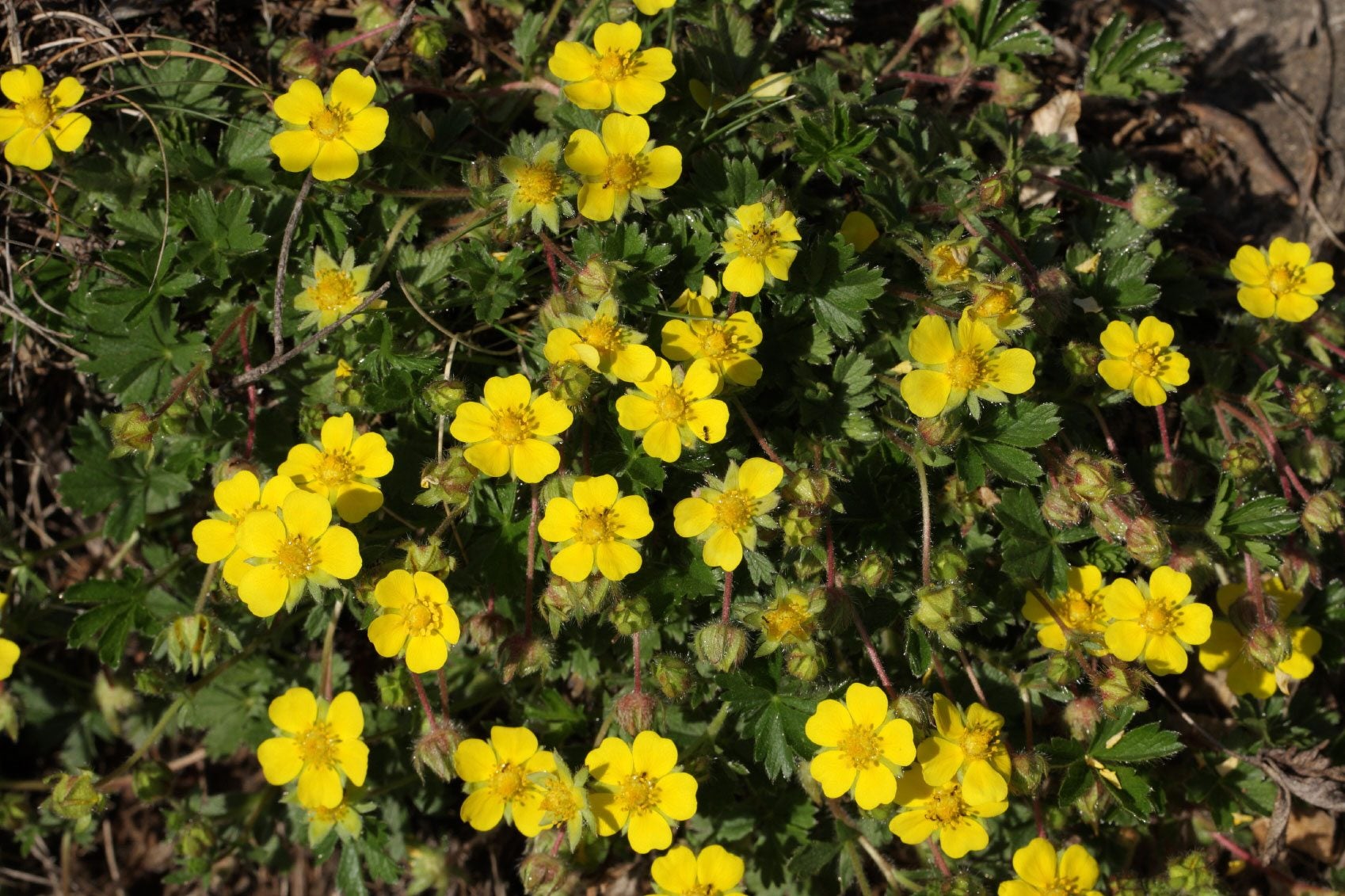Potentilla Groundcover: How To Grow Creeping Potentilla In Gardens


Potentilla (Potentilla spp.), also called cinquefoil, is an ideal groundcover for partly shady areas. This attractive, little plant spreads by means of underground runners. Its lemony-colored flowers that last all spring and strawberry-scented foliage make it irresistible.
Spring Cinquefoil Plants in Gardens
These plants are evergreen in mild climates. They grow 3 to 6 inches (8-15 cm.) tall, with each leaf made up of five leaflets. Potentilla gets the name “cinquefoil” from the French word “cinq” which means five. In spring, cinquefoil plants are covered with flowers that are one-quarter inch (6 mm.) in diameter. The buttery yellow to bright yellow flowers bloom over a long season if temperatures don't climb too high. Propagate potentilla plants from seeds or by dividing the plants in spring. You won't want to grow creeping potentilla in gardens, where it quickly takes over an area. Instead, use it as a lawn replacement in areas with light foot traffic, in rock gardens, or in rock walls. Some gardeners use it as a groundcover in bulb beds. There are some lovely types of creeping potentilla that bloom in white and shades of orange and pink; however, the seeds of these varieties don't always breed true. Since the plants produce seeds that fall to the ground and germinate, you may find these types reverting to yellow.
Growing Creeping Cinquefoil
Plant potentilla groundcover in full sun or partial shade. Some shade is best in areas with very warm summers. The plants thrive in average, moist but well-drained soil. Potentilla grows well in USDA plant hardiness zones 4 through 8 as long as summers aren't too hot. Water the plants well until they are established. Afterward, water often enough to keep the soil lightly moist. Water slowly and deeply each time, waiting until the surface is dry before watering again. The plants don't need annual fertilization. Potentilla has fine-textured foliage that looks good throughout spring and summer, and into the fall. If the plants begin to look ragged, set the mower blade as high as it will go and mow it down. It's best to refresh the plants this way a couple of times each year. The foliage quickly regrows.
Gardening tips, videos, info and more delivered right to your inbox!
Sign up for the Gardening Know How newsletter today and receive a free copy of our e-book "How to Grow Delicious Tomatoes".

Jackie Carroll has written over 500 articles for Gardening Know How on a wide range of topics.
-
 Looking For Plants To Give You The Soft And Fuzzies? Try These 5 Fuzzy Leaf Plant Options
Looking For Plants To Give You The Soft And Fuzzies? Try These 5 Fuzzy Leaf Plant OptionsLovers of texture, drama, silver foliage and tactile plants will adore these special sensory garden additions. These fuzzy leaf plant options will leave you all aglow
By Susan Albert
-
 Get Ready For A Summer Of Hummers! Grow These Full Sun Hummingbird Plants and Flowers
Get Ready For A Summer Of Hummers! Grow These Full Sun Hummingbird Plants and FlowersIf you’re lucky enough to enjoy a sunny backyard, make sure you are maxing out on your pollinator opportunities and grow these full sun hummingbird plants and flowers
By Tonya Barnett